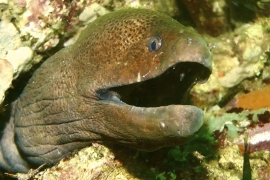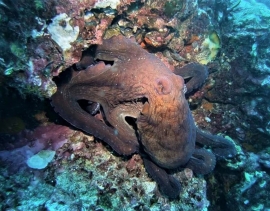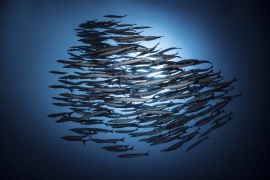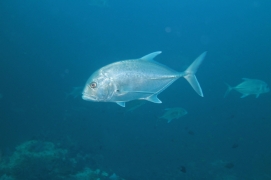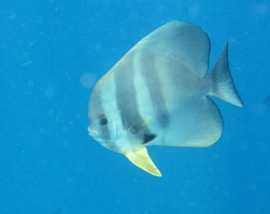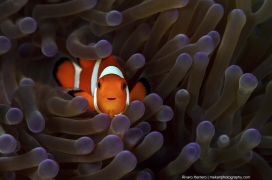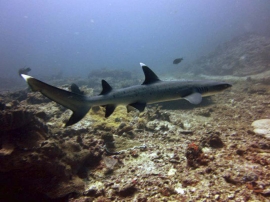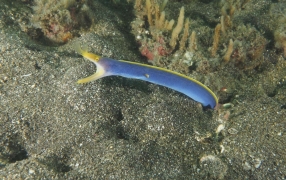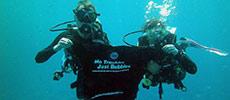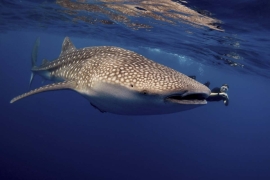
Zabargad Island Liveaboard Diving
Still one of Egypt's best-kept secrets, Zabargad Island is a jewel in The Red Sea. It's located in the far south of Egypt's coastline, near to the border with Sudan. It has several world-class dive sites, a wreck, and currently very few liveaboard dive boats are there each day. The remote location ensures for some excellent diving with special species.
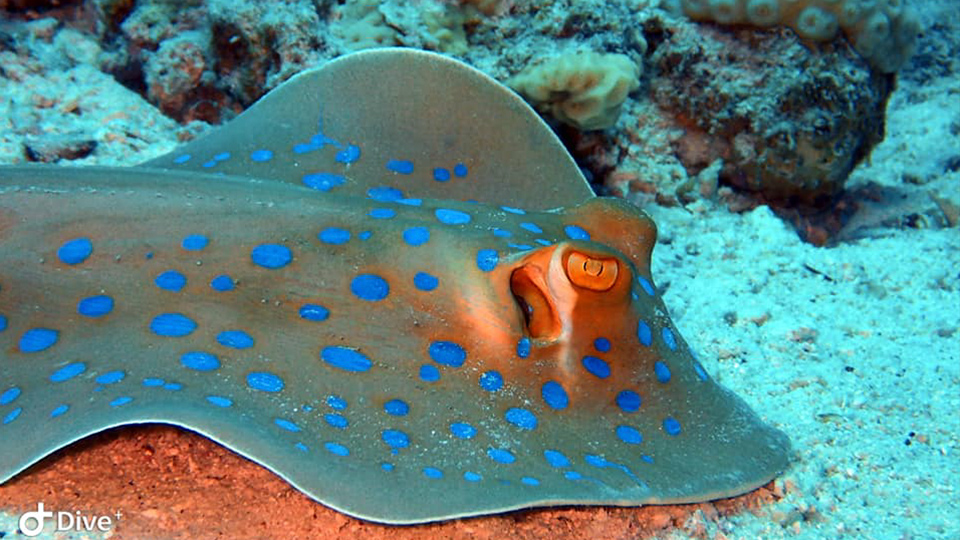
Zabargad Island is also known as St. John's Island, and is the largest island in the area in the deep south of Egypt's Red Sea. It is not to be confused with St. John's reefs, although the two are connected and in the same area and within the Elba National Marine Park. It gets its name from the 'topaz' once mined there. Most 'Deep South' itineraries for our Red Sea diving liveaboards are entitled 'St. John's, Rocky Island, Zabargad Island' because the boats visit the area and islands. Zabargad and Rocky Islands are 50-60km. from the mainland, far out at sea. St. John's reefs are the islands between Zabargad/Rocky and the mainland. This uninhabited island is triangular in shape, measuring 2.6km east to west, and 3km north to south. It has a mountain in its centre that reaches a height of approximately 250 metres. There is still some debate as to how the island came to be formed. The island has been used for mining in the past, but nowadays it remains barren above the water's surface and quite the opposite below. Being located too far out at sea for day trip diving, only liveaboards come here. Normally they moor up in the bay on the south side, which gives plenty of protection from wind and currents coming from the north. And the island is also a great base for diving at Rocky Island which lies 6 kilometres to the south east.
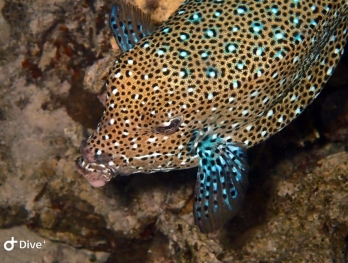 Male adult Yellow Boxfish - Credit: Aida KaramesicDiving at Zabargad Island is truly world class, with some stunning reefs and a mysterious wreck, which are covered by resident marine life. Plus there's always the chance of a large pelagic shark passing through. Most of the diving is done on the southern edge of Zabargad, but there are heathy reefs all around the island. The wreck is a 75m-long Russian Moma vessel that sank during The Cold War, and therefore accurate information about it is limited. It lies in 24-25 metres of water, with its mast breaking the surface at low tides. Having been in the water far from Egypt's mainland for so long, it is covered in fish and invertebrates of all shapes and sizes.
Male adult Yellow Boxfish - Credit: Aida KaramesicDiving at Zabargad Island is truly world class, with some stunning reefs and a mysterious wreck, which are covered by resident marine life. Plus there's always the chance of a large pelagic shark passing through. Most of the diving is done on the southern edge of Zabargad, but there are heathy reefs all around the island. The wreck is a 75m-long Russian Moma vessel that sank during The Cold War, and therefore accurate information about it is limited. It lies in 24-25 metres of water, with its mast breaking the surface at low tides. Having been in the water far from Egypt's mainland for so long, it is covered in fish and invertebrates of all shapes and sizes.
The island has some excellent diving opportunities for all levels of scuba diver. For those who don't like a current, and for night dives, there are sheltered areas which have plenty of healthy corals and marine life. Plus in deeper and more-exposed spots there are some exciting dive sites for those who want to look for passing sharks. Octopuses, Moray Eels, Crocodilefish and turtles are commonly seen here. And female turtles are visitors to the beaches to lay eggs in the summer.
Conditions at Zabargad Island
When to dive at Zabargad Island
You can dive at Zabargad all year round, but the weather and sea are warmest in July to September, and coolest in February.
What type of dive site is Zabargad Island
The island is surrounded by coral reefs in very clear water that is not too deep. You can enjoy sloping reefs, walls with currents, and a large wreck.
Where is Zabargad Island?
Zabargad Island is very near to the Egyptian border with Sudan, in the far south of the country. It's at least 50 kilometres out to sea, and 80 kilometres from the nearest town on the mainland.
How to get to Zabargad Island
The only way to get to Zabargad for diving is on a Red Sea liveaboard safari cruise. It is only included in 'South' or 'Deep South' itineraries from Marsa Alam or Port Ghalib. Itineraires nearly always include Rocky Island and St. John's reef.
Who can dive at Zabargad Island
Although there are no fixed regulations for the certification level or experience to dive at Zabargad, from a practical and logistical point of view, you need to be certified to 30 metres (Advanced) and have experience to dive in a current. It's almost guaranteed that every other diver on the liveaboard will have this level of experience and therefore it's necessary to make buddy groups.
What marine life can you see at Zabargad Island?
Being further south than the busier islands in the north of The Red Sea, and far from the coast, you can expect to see more pelagic species here at Zabargad than at the wrecks & reefs elsewhere in Egypt's Red Sea. In addition to the passing pelagics, there is plenty of resident marine life at Zabargad to keep divers occupied while waiting for something larger.
Summary of Zabargad Island
Diving at Zabargad is an excellent choice to get away from the crowds and enjoy world-class dive sites that are never crowded with other boats. When compared to further north, there are fewer dive sites close to each other and only one or two wrecks. But this area is becoming very popular, and for good reason.

